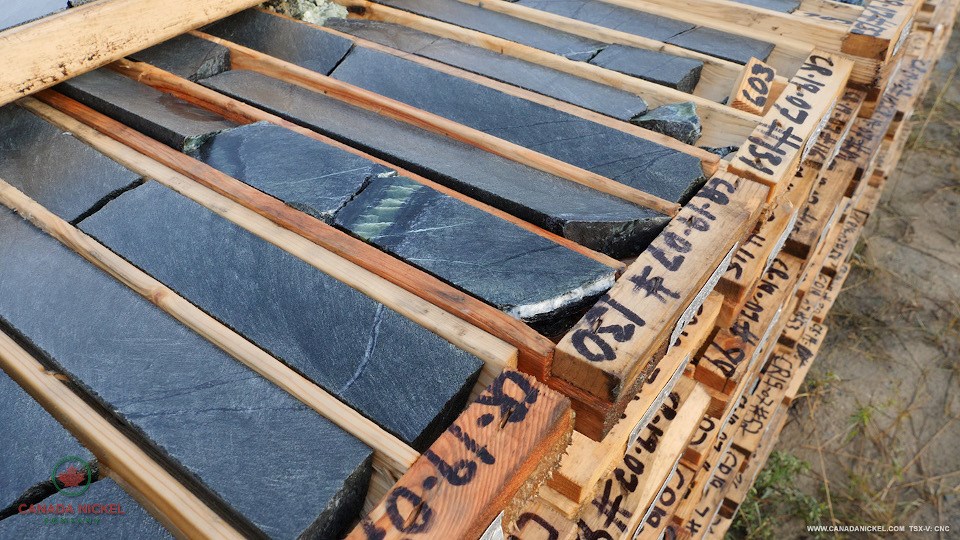The deeper Canada Nickel Company drills at its Crawford Project outside Timmins, the richer the results get.
The Toronto nickel explorer recently released a handful of very promising drill results from an infill exploration program of its East Zone, one of the two areas the company is sizing up for a pair of open-pit mines.
In putting together the economic and production picture for Crawford, the company has been drilling along the fringes of the East Zone, intending to boost the amount of estimated nickel it's discovered so far.
The company posted partial drill results last week from the first six of 22 holes drilled, which show higher grade nickel and platinum group metals at depth.
Two holes revealed the grades got higher the deeper the drilling went, down to depths of 624 and 735 metres, more than 100 metres below the current mineral resource.
One drill hole revealed 0.31 per cent nickel across its entire 576-metre core length. Another drill hole, the company said, had mineralization across its entire 690-metre length with assays still pending. Five other holes intersected high-grade mineraliztion at depths of up to 216.6 metres.
Sign up for the Sudbury Mining Solutions weekly newsletter here.
These results add a new wrinkle to Canada Nickel's goal to develop a large-scale, low-grade pit operation, 40 kilometres north of the city.
The company has been promoting Crawford as one of the world's biggest up-and-coming nickel sulphide mine projects. It views Crawford as a two-pit operation over its projected 25-year mining life, but there's huge exploration upside that could add to its longevity.
According to Canada Nickel's plans, drilling, blasting and hauling away mineralized material would begin in the Main Zone and then switch over to the East Zone by year 17 when resources in the Main Zone are depleted.
A preliminary economic assessment of Crawford released last May counts 842,000 tonnes of nickel in the ground along with 21 million tonnes of iron and 1.5 million tonnes of chrome, valued at $24 billion. Annual nickel production would be 75 million pounds with significant iron and chrome by-products of 860,000 tonnes per year and 59,000 tonnes per year, respectively.
Canada Nickel insists this is only a fraction of the resource potential on its 72,000-hectare property.
"The East Zone is becoming a significant resource," said Canada Nickel CEO Mark Selby in a news release.
"The most recent infill and expansion drilling at the Crawford East Zone continues to confirm our target of increasing the East Zone resource by (two to three times) and the identification of an extensive higher grade core, similar to the Main Zone, has been an exciting development."
Once the infill program wraps up at the end of this year, all the drill results will be poured into an updated resource estimate which will folded into a final feasibility study for Crawford due out in late 2022.
Selby has been promoting the Canada Nickel as a net-zero emissions project that will be a future supplier of nickel concentrate to the electric vehicle battery market and iron concentrate to the stainless steel sector.




